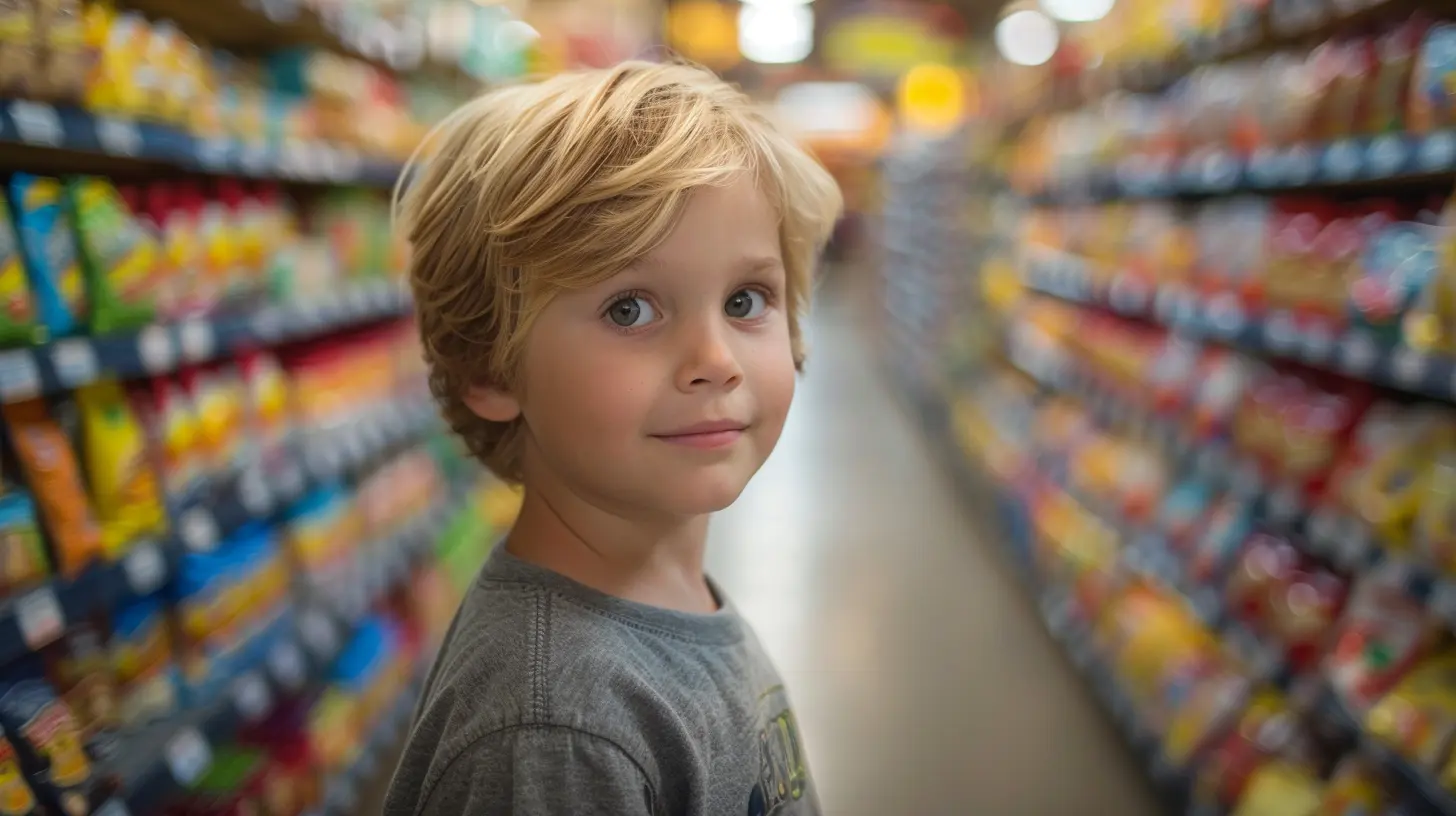How to Encourage Grateful Behavior When Surrounded by Consumerism
19 September 2025
Ever feel like you're swimming upstream trying to teach gratitude in a world constantly shouting, "Buy more!"? You're not alone. Encouraging grateful behavior when surrounded by consumerism can feel like trying to whisper during a rock concert. But it’s not only possible—it’s essential.
We're raising kids in a culture where commercials, influencers, and peer pressure are constantly whispering—or screaming—one thing: “You need more to be happy.” As parents, that’s a tough tide to fight. But here’s the good news: gratitude is teachable. You don't need to exile your family to a remote cabin with no Wi-Fi to cultivate it (thank goodness, right?).
Let’s break down how to nurture grateful hearts, even when the world is offering a never-ending buffet of stuff.
Why Gratitude Matters More Than Ever
Gratitude is more than just saying "thank you". It’s an attitude, a mindset, and honestly, a bit of a superpower. Kids who practice gratitude regularly are shown to be happier, more empathetic, and emotionally resilient. They sleep better, stress less, and are even kinder.In contrast, consumerism often fuels entitlement, impatience, and dissatisfaction. Ever seen a child bypass 10 toys only to cry because they didn’t get the exact one they wanted? Yeah—consumerism at play.
Raising grateful kids is like handing them a toolkit for life. They’re better equipped to face challenges, enjoy what they have, and understand the value of people over possessions.
The Consumerism Trap: Why It’s So Hard to Escape
Today’s kids are surrounded by an Amazon Prime culture—everything is instant. Want a toy? Click. See a friend wearing new sneakers? Need them now. Social media and streaming platforms bombard them with idealized lifestyles. Even commercials on kids’ YouTube channels push products disguised as "must-haves."It doesn’t help that as adults, we also fall into these traps. We might upgrade phones, chase sales, and get caught in comparison games. Our kids notice. Like it or not, we model the behavior they adopt.
But here's the silver lining: since they learn it from us, they can also learn something better.
Leading by Example: Gratitude Starts With You
Let’s be real. You can’t expect your kids to value what they have if you’re constantly frustrated by what you don’t. Ouch, right?But it’s true—kids watch more than they listen. When you practice gratitude out loud, it shows them what it looks like in real life.
Try this:
- Share something you’re grateful for over dinner.
- Thank your partner or friend in front of your kids.
- Talk about how much you enjoyed a simple moment—like a walk or a hug—rather than fixating on a new gadget or event.
It feels small, but these moments stack up over time.
Talk About “Wants” vs. “Needs”
This one’s a game-changer. Consumer culture often blurs the line between wants and needs. If it’s flashy, trendy, and sold with a smile—it must be essential, right?Help your kids sort it out:
- “Do we really need this, or do we just want it?”
- “What does this item actually add to our lives?”
- “Is it worth spending our money, energy, or time on this?”
Don’t worry, the goal isn’t to deny them fun stuff. It’s to raise awareness. Kids can absolutely enjoy things—they just don’t need to define themselves by them.
It’s like giving them glasses that help them see through marketing fog.
Practice “Pause and Reflect” Moments
Slow things down.Before buying something, taking on a new activity, or even opening a gift, pause for just a moment and ask:
- What am I thankful for right now?
- What's already going well in my life?
- How will this item or experience make me feel—and for how long?
These little check-ins encourage kids (and honestly, us too!) to be more mindful and present instead of always chasing the next "new" thing.
Make Giving a Family Habit
Here’s a powerful antidote to consumerism: generosity.When kids give, they shift their focus from “me” to “we.” It’s hard to feel entitled while helping someone in need.
Some simple ways to build a giving habit:
- Donate toys or clothes together (let your child choose items).
- Volunteer at local shelters or food banks.
- Create care packages for underprivileged families.
- Budget for a "giving jar" where a portion of allowance or gift money goes to a cause your child cares about.
Generosity hits the pause button on "more, more, more" and invites your child to appreciate what they already have.
Keep an Appreciation Journal
Gratitude journals aren’t just for adults sipping green smoothies and doing yoga (though that sounds kinda nice). Kids can totally get into it too.Make it simple:
- Before bed, write or draw one thing you’re thankful for.
- Use prompts like: "Something that made me smile today" or "A person I appreciate."
You’ll be surprised how this small habit can shift your child’s mindset from scarcity to abundance. Plus, it’s a great keepsake to look back on.
Use Stories to Nurture Perspective
Kids love stories. And stories are one of the best ways to teach gratitude—without preaching.Read books or share stories where characters:
- Overcome hardship
- Learn to appreciate small joys
- Find happiness through family, friendships, or community
Books like “Last Stop on Market Street” or “The Giving Tree” can open their eyes to a world beyond things. Even sharing your own childhood experiences (especially the ones without tablets and WiFi!) can help them appreciate how far they’ve come.
Embrace “Experience Over Stuff”
Consumerism teaches us that stuff equals happiness. But you know what leaves a deeper impression than toys? Time.Try shifting the focus:
- Instead of a toy, plan a special outing.
- Trade birthday presents for a family mini-adventure.
- Cook a meal together instead of dining out.
Experiences create memories, connection, and stories your kids will remember—long after the wrapping paper’s gone.
Think of it like planting seeds. Toys break. Memories grow.
Celebrate the Little Things
You don’t need big moments to teach gratitude. Daily life is full of opportunities.- “Wasn’t that sunset beautiful?”
- “That warm cookie tasted amazing, didn’t it?”
- “I loved when your brother shared his toy—what a kind gesture!”
Spot the good. Say it out loud. Normalizing appreciation for everyday moments helps kids develop a constant internal gratitude radar.
Guard the Gate: Be Mindful of Media
Let’s be honest—it’s nearly impossible to eliminate ads and product exposure entirely. But we can filter what our kids consume and how they interpret it.- Choose shows and apps with fewer (or no) ads.
- Talk about commercials—what are they trying to make us feel or do?
- Limit screen time or swap with creative play or outdoor time.
Rather than blocking everything, guide them toward awareness. It's like giving them armor in the battlefield of “buy now” messaging.
Normalize Saying “No”
Sometimes the best way to teach gratitude... is to say “no.”Not to be mean. Not to deprive. But to teach balance.
Delayed gratification helps kids appreciate what they receive. It makes the “yes” more meaningful and keeps their expectations in check.
Explain your reasons. Stay consistent. And remind them: not getting everything they want doesn’t mean they’re loved any less.
Final Thoughts: Gratitude Is a Journey, Not a Destination
Let’s be real—your child won’t turn into a monk overnight. It’s messy. Some days will feel like a win. Others? Not so much. That’s okay.Raising grateful kids in a consumerist world isn’t about perfection. It’s about trying. Showing up. Creating space for reflection, simplicity, and connection. And remembering that even small, consistent efforts make a big difference over time.
The world may be shouting, “Buy more!”—but in your home, you can whisper a louder message: “You are enough. What you have is enough.”
And that, my friend, is the kind of legacy that truly lasts.
all images in this post were generated using AI tools
Category:
Teaching GratitudeAuthor:

Max Shaffer
Discussion
rate this article
1 comments
Gunnar McKale
Thank you for highlighting this important issue. In a world that often prioritizes materialism, fostering gratitude can be a challenge. Your insights will help many parents instill meaningful values in their children, encouraging appreciation for what truly matters. Together, we can nurture a more grateful generation.
September 20, 2025 at 3:42 PM

Max Shaffer
Thank you for your thoughtful comment! I'm glad you found the insights helpful in fostering gratitude amidst consumerism. Together, we can indeed raise a more appreciative generation.


